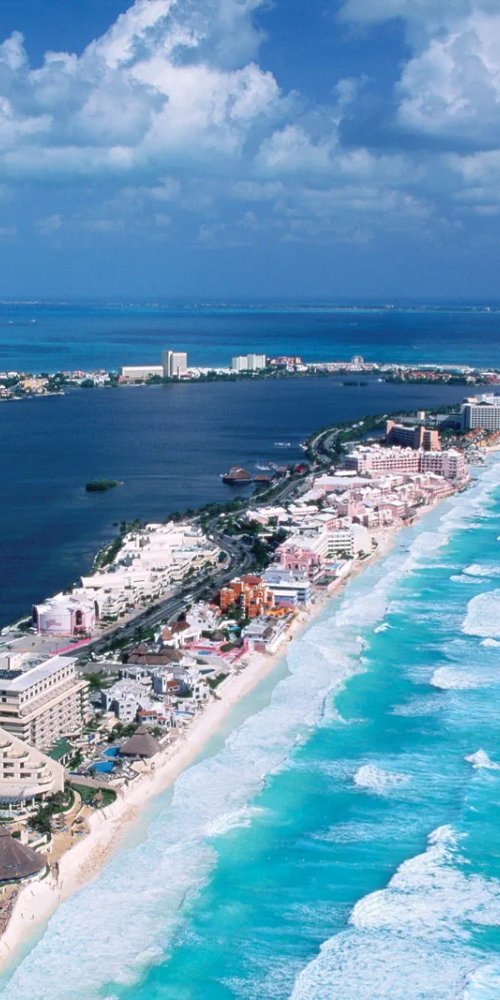

The moment you step into Cancún, MX, the city’s pulse is unmistakable. You hear the rhythmic beeping of ticket barriers as locals and visitors swipe their cards, the cheerful ding of trams gliding through avenues, and the low murmur of conversations weaving through half a dozen languages. The air carries a salty breeze from the nearby turquoise sea mixed with the scent of fresh street tacos and blooming bougainvillea. Buses rumble past vibrant markets, while bikes zip by tourists snapping photos. It’s a dynamic symphony of movement that beckons you to dive in and explore - but how do you navigate this bustling network without getting lost or overpaying? Let me guide you through the ins and outs of public transport in Cancún, MX, so you can glide smoothly from hotel zones to market squares and beaches, soaking up every vibrant moment.

Choosing public transport in Cancún, MX, isn’t just economical - it’s a smart, efficient, and environmentally sound way to experience the city. Taxis here can be surprisingly costly, and rental cars, while convenient, might leave you stuck in traffic or hunting for parking near tourist hotspots. By hopping on a tram or bus, you tap into a dependable rhythm that locals have relied on for decades.
Cost-wise, a single ride at 12 MXN (£0.50) beats taxi fares by a mile, especially when you factor in unlimited passes that let you explore without counting coins or worrying about change. When I first arrived, zipping from the hotel zone to downtown markets was a breeze - no haggling, just swift, scenic rides.
Moreover, the public transport system is steadily becoming greener. Many trams and buses run on cleaner fuels, helping Cancún reduce emissions from the tourist surge. For the eco-conscious traveller, choosing buses or trams means your holiday footprint shrinks while your adventure expands.
Finally, public transport offers unparalleled local flavour. You glimpse daily life, overhear snippets of story, and share smiles with Cancún’s friendly residents. It’s how to get around Cancún, MX, like a local, enhancing your journey with authenticity and charm.
| Mode | Lines | Peak Frequency | Night Service |
|---|---|---|---|
| Bus | 15+ | Every 10-15 mins | Limited (till ~23:00) |
| Tram | 2 main (Hotel Zone & Downtown) | Every 8-12 mins | Yes, till 23:15 |
| Ferry | 2 primary routes (Isla Mujeres, Isla Blanca) | Hourly | No |
| Bike-share | Various stations across Hotel Zone | Available 24/7 | N/A |
The transport network in Cancún, MX, is designed to match its tourism-heavy pulse while serving everyday needs. The frequent trams glide along well-marked corridors, connecting you quickly between hotels and downtown markets. Buses cover a broader map, including suburban areas and quieter districts, with frequent stops perfect for spontaneous exploration. Ferries add a maritime twist, ferrying passengers to nearby islands for a day’s getaway. The variety ensures you have multiple options - whether you prioritise speed, cost, or scenic routes.
Peak hours in Cancún’s public transport system run roughly from 07:00 to 09:30 and 17:00 to 20:00 on weekdays, coinciding with work commuters and school runs. Buses and trams can be crowded during these windows, especially along main corridors like Avenida Tulum.
Plan your trips to avoid these rush hours. For example, catching a 10:00 tram avoids the squeeze and leaves you time to snap photos without bumping elbows.
Off-peak travel offers spacious vehicles and often quicker boarding since demand drops. Midday and late evening offer serene rides, perfect for contemplative gazes over the city’s architecture or the sea horizon.
Weekend timings differ: services often start later and run less frequently on Sundays, so check schedules beforehand to avoid waiting in the sun.

Most trams and newer buses have low floors and ramps for wheelchairs, with dedicated spaces onboard. Drivers are usually helpful - don’t hesitate to ask. Stations have tactile paving, but some smaller stops may lack full accessibility.
Prams fold easily for tram entry. Bus access can vary; try to board through the front door where space is better. Early travel helps avoid crowded conditions when managing toddlers.
Luggage storage onboard is scarce but adequate for small suitcases. Larger bags settle best on buses rather than trams due to space. Consider off-peak travel when carrying heavy bags to avoid rush discomfort.
No official metro exists yet, but a comprehensive tram-bus network largely meets public transit needs smoothly.
At vending machines and certain tram stations, yes. However, many local buses require cash payments, so carry small bills.
Generally quite reliable with frequent service during the day. Delays are rare but do allow extra time if connecting to ferry or appointments.
Tickets and passes are available at official kiosks, transport apps, and vending machines at major stops.
Exploring public transport in Cancún, MX, soon? Don’t hesitate to comment below with your questions or experiences! Subscribe to our newsletter for fresh updates, insider tips, and exclusive guides. With the right knowledge, you’ll navigate Cancún’s colourful transport network like a pro - and maybe even share a smile or two along the way.

Additional articles from our network with useful insights about Cancún.